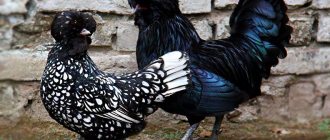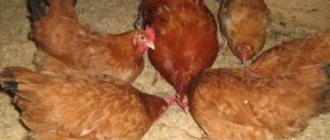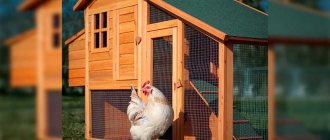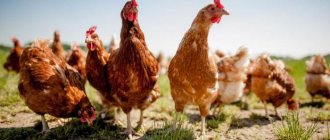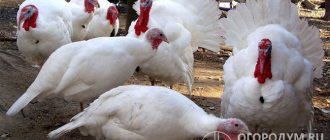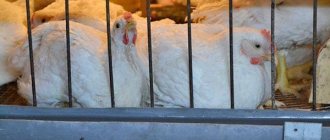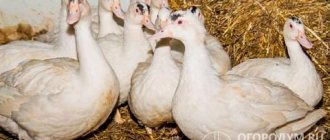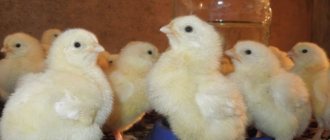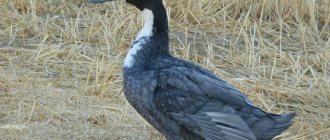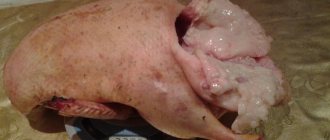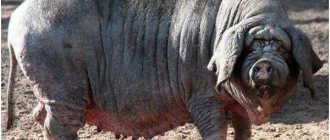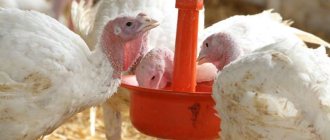Poultry is raised for food, meat and eggs. However, some species of birds attract farmers with their original appearance. They are used to decorate a personal plot. Among them, chickens with furry paws are very popular. In addition to their unusual exterior, birds have other advantages - good productivity, calm character, and the ability to adapt to different climatic conditions. Many representatives of ornamental species are able to demonstrate maternal qualities.
Breeds of ornamental chickens
Chickens with shaggy legs - what breed? Rare and expensive? Not at all. Shaggy-legged chickens are not classified as rare breeds, since the first specimens began to appear more than 100 years ago. Despite the smaller volume of products obtained from such birds, the demand for them is growing every year. Today the most popular are:
- Siberian moth;
- Ushanka;
- Brahma;
- Cochin;
- Faverolles;
- Sultanka.
The characteristic feather pants give the chickens an unusual look. Chickens with shaggy legs are a frost-resistant breed. Some even have higher egg production in winter than in summer.
Shaggy-legged chickens
Important! Each breed has its own characteristics, taking into account which you can increase productivity. For example, Ushanka is distinguished by its egg production, and the weight of Cochin sometimes reaches 5 kg of live weight
Siberian Mossfoot
Bred in Russia, the Siberian Roughneck is a restored breed of chicken, so they look more like wild birds rather than domestic ones. Chickens with furry feet of this population are in great demand on the market.
The first thing that catches your eye is the excessive feathering on the legs and the crested cap on the head. The small comb is completely hidden under the crest. The shaggy hair on the legs is thick, reaching to the nails. These characteristic differences are not without reason, but to protect against the cold.
Another notable characteristic of the Siberian Mossfoot breed is its long and thick beard. Moreover, the gender of the bird does not matter. On the large head of the Siberian there are sideburns that almost completely hide the small white lobes and red face. The short neck is covered with a thick feathery mane. Hairy chickens have a wide back, chest and powerful tail.
Siberian Mossfoot
The feather is in most cases black, but cuckoo and white colors are also found. In a poultry yard, the sight of a disheveled white rooster is a kind of exotic.
The Siberian hen is a good laying hen. It can produce up to 180 large eggs per year, about 60 g each. The weight of an adult bird is approximately 1.8 kg, and that of a rooster is 2.7 kg.
The Siberian is an active but calm bird. It tolerates frost well, but is not afraid of heat either. The main thing a hairy chicken needs is water and an opportunity to hide from the sun. The bushy-legged chickens of this breed calmly paddle in the snow, even pecking at it instead of water.
Important! By mixing sprouted grain with feeding chalk, you can strengthen the bones of chickens so that they do not become hunchbacked. Having a population of Siberian ruffed chickens in your yard, you can get:. Having a population of Siberian bush-legged chickens in your yard, you can get:
Having a population of Siberian bush-legged chickens in your yard, you can get:
- up to 180 large eggs per year;
- carcasses about 3 kg;
- high egg fertility.
Shaggy-legged Ushanka
She is often called a "proud layer of pants." Shaggy-legged Ushanka chickens are incredibly charming, but very stately. This is a new breed, the basis for which was the Orlovskaya and Pavlovskaya.
The color of the Ushanka's feather is always light brown, each limb is covered with small feathers, and there is a beard under the beak. A small chicken appears huge due to its plumage. The weight of the chicken reaches 2.5 kg, the cockerel - 3 kg.
Breed of chickens Shaggy Ushanka
The bird has a beautiful neat crest on its head and a very strong beak.
Sideburns also attract attention
The hen will lay eggs from the age of six months, bringing 160 eggs per year.
The breed does not pretend to have special care. Since the Ushanok variety is a bird of increased plumage, preventive maintenance of the chickens themselves and chicken coops should be carried out periodically to prevent parasites.
You can feed Ushanka to anyone, they are unpretentious eaters:
- meal;
- millet;
- bran;
- table waste;
- weeds;
- corn;
- compound feed.
Important! Mineral supplements, salt, ash, gravel are very useful for chickens. Extraordinary chicken has undoubted advantages:. Extraordinary chicken has undoubted advantages:
Extraordinary chicken has undoubted advantages:
- unusual appearance;
- good egg production;
- friendliness to other birds;
- unpretentiousness;
- attractiveness;
- great character.
You also need to add unpleasant moments to the description:
- low prevalence creates a certain chicken shortage;
- the fluffy cover of the paws is an excellent home for parasites;
- shaggy legs bring a lot of dirt onto the litter.
Chickens Dominant
Chickens Dominant
The Dominant breed chicken is a real giant. An adult rooster can reach a weight of more than 3 kg. Their color is light, the chickens, on the contrary, are all dark. Dominants are distinguished by their endurance and unpretentiousness.
The birds themselves are squat. The earrings and crest are bright scarlet, the wings fit tightly. The short legs are yellow. Egg production is at the highest level - almost 310 large eggs per year.
Productivity trumps decoration?
Ushanka Lokhmonogaya is not a small chicken. Even females have a considerable weight - from two and a half kilograms. Roosters weigh about 3 kilograms.
Chickens will lay large eggs, up to 60 g, the shells of the eggs are light brown, completely matching the color of the laying hens.
In a year, one hen can provide a farm with 150-170 eggs; females begin laying eggs at the age of six months. In small household farms, it was calculated that at the beginning of the egg-laying period, they received about seven eggs per day for 10 pullets of Shaggy Earflaps.
Breed of chickens Ushankaan original decoration for your yard
Ukrainian black chicken, which is another name for earflaps, has the following external characteristics:
- the bird has a small head with a leaf-shaped or rose-shaped crest and a black shortened beak;
- eyes should be a distinct orange color;
- earrings and earlobes are red, occasionally with small white patches;
- Representatives of the breed are characterized by a wide and straight back, deep chest;
- the tail of such chickens is of medium size, but located strictly vertically in relation to the body;
- metatarsals are not long, painted steel color;
- the plumage is thick and fits tightly to the body;
- The color of the feathers, as the name suggests, is black. At the same time, the rooster’s plumage is shiny and glossy, while the chicken’s plumage is matte. Sometimes the feathers can have a purple tint, and in the neck area a greenish tint.
Origin
The Ukrainian Ushanka is in many ways similar to another breed of chicken – the Shaggy-legged Ushanka. Indeed, the difference between them is small. The only external difference is that the Ukrainian chicken has smooth legs without feathers, and shaggy-legged earflaps have legs covered with feathers.
Unfortunately, there is very little information about how this variety was bred. It is believed that Oryol chickens (remember their famous “vegetation” on the face) and hairy-legged Pavlovsk chickens, which are famous for their “pants,” were used as mother breeds.
Cochin
Cochin chickens are very massive birds, have a dense skeletal structure and great plumage. The back and chest are wider than those of other breeds, and there is a clearly visible curve from the neck to the shoulders.
Cochin chickens
Cochin roosters have a small but clearly visible comb. It is worth noting that roosters have small heads. The tail feathers are short, but lush and heavy. As for chickens, their tail is also short, despite the fact that the bird’s overall plumage is thick.
Looking at chickens, you might think that the legs and head are very small and strong in relation to the proportions of the body, but this is not at all true, because the plumage is too lush. When the wing is folded, its top plumage slightly covers the tail plumage, although the wing itself is relatively short. The muscle mass of the legs is well developed and abundantly covered with down. At first glance, Cochins may seem more like a clump of feathers than a bird.
There are several intrabreed species of these chickens, which can be distinguished by the color of their feathers. Each subspecies has its own special external characteristics, which are used for screening and selection. Let's look at the subspecies of birds within the Cochin breed:
- Blue. The feathers of this species are gray-blue in color, with a pronounced blue. This is the distinctive feature of blue Cochins. Roosters of this type have dark feathers in the back and upper parts of the body, which turn into black, while some feathers and down may be white.
- White. These birds are almost invisible in winter due to their snow-white feathers. The red comb, yellowish paws and beak are the only things that catch the eye.
- Black. Here the name speaks for itself. The color of these birds is distinguished by dark tones with a greenish tint. It is very important that the breeding stock have black not only feathers, but also feather shafts. This is carefully monitored and necessary in order to maintain the purity of the subspecies. It is extremely rare to have a small amount of white down, but only if it is covered with feathers.
- Pale yellow. These birds differ from their relatives in their bright orange or yellow color, so representatives of this species are sometimes called yellow Cochins. For a purebred bird, it is very important that the bright yellow color is everywhere, both on the feathers, down, and on the beak and rods. But the tail and wings of yellow Cochins have a dark tint at the ends.
- Dwarf. There are many opinions about this species, whether they are considered a subspecies or are an independent breed of birds. In appearance and size, they are not very different from ordinary Cochins. The thing is that birds have short legs and very long feathers that hang down and hide the legs of chickens. Because of this, it seems that the birds are floating on the ground, rather than walking. Often the color of dwarf Cochins is golden, but it can be completely different. The feathers themselves are very soft and feel more like down without the feathers.
Cochins are very calm in character, do not make unnecessary noise, do not like to run, and at the same time the hen instinct is well developed.
Description of the Ushanka shaggy-legged chicken breed
A distinctive feature of the breed is considered to be its external attractiveness, as well as its proud and friendly character. It is recommended to keep birds in the northern regions, because birds are practically not afraid of frost and easily tolerate cold snaps, live in unheated chicken coops and walk without fear in a winter aviary.
But unpretentiousness is not the main trump card of earflaps; chickens are not inferior in productivity to other laying hens and are of the meat-egg type. The carcasses gain decent weight, providing the owner with not only healthy and nutritious eggs, but also tasty meat.
External characteristics
Chickens are given a specific appearance and an unusual gait due to the presence of feather “pants”. The body shape and size are normal, the highlight is the plumage in the form of:
- Beards under the beak.
- Bakov behind the ears.
- Shaggy legs.
The color rarely changes and can only differ in color intensity; the main shade is light brown; in the tail, black with a green tint is acceptable. The feather is small, a beard is clearly visible under the beak, and behind the ears there are exquisite sideburns, the paws are also covered with down and feathers
The bird walks widely and measuredly, attracting attention with its fluffy pants. There is a small and neat pink comb on the head; in roosters it is more developed, but also small
The beak is curved, the neck is of medium length, the posture is proud and fit, stately. Breeders value individuals for their lush plumage on their paws.
Temperament
By nature, the birds are calm, they do not allow themselves unnecessary activity and do not attack food, like other relatives. At the same time, this is their disadvantage, because calm and quiet chicks are often offended by more obstinate individuals.
At a young age, chickens are kept separately from other breeds, and already adult chickens can be raised together with the rest; ear-eared chickens are not aggressive and quite friendly individuals.
Productivity indicators
Bird carcasses are of average fatness, but can boast a specific weight in comparison with other laying hens:
- Chickens weigh 2-2.5 kilos.
- Roosters reach up to 3 kg.
The meat is juicy and tasty; one carcass is enough for a rich and nutritious broth for a large family. Laying hens begin their first clutch at 6 months of age, so they need enhanced nutrition containing vitamins and calcium.
Eggs come out weighing 60 grams, and their number reaches 160–170 per year from one chicken. This is quite enough for home poultry farming; about 5–7 eggs are produced per day from a dozen chickens.
Age-related decline in egg production
The shaggy-footed earflaps are long-lived, their lifespan is 15–18 years, which means that the chicken can lay eggs throughout its life, but to maintain the quality of the product and obtain soft meat, the population is renewed after 2–3 years.
On average, egg production drops after 4–5 years and worsens every year, which significantly affects the profitability of birds. A special mineral supplement to food, a 12-hour day of light, and appropriate living conditions will help raise this percentage. If all the rules are followed, the chicken can lay eggs for up to 5–10 years, but in this case the meat loses its taste and becomes tough and stringy.
Advantages and disadvantages of the breed
The breed is respected by many poultry farmers, especially if home breeding is involved; birds are rarely used in factories, preferring more productive layers. In the household, the Ushankas have settled down perfectly; they are not only producers of eggs, but also a decoration of the yard; such an appearance is not found everywhere.
The undoubted advantages include:
- Simplicity in content.
- Unpretentiousness in the diet.
- Frost resistance.
- Calm and balanced character.
- Productivity.
- Getting along with other birds
But an attractive appearance does not always live up to expectations and brings troubles, such as dirt on the feathers of the paws, and parasites also appear there. The breed is quite rare and difficult to find in nearby nurseries, so breeding may be difficult.
Analogs
In terms of weight, productivity and exterior elements, Ushanka Lokhmonogaya is very reminiscent of Oryol and Pavlovsk chickens. We almost lost these two breeds. However, thanks to birding enthusiasts, they are returning to home poultry houses and poultry farms.
The Loman Brown chicken is considered an equally popular bird. We have a separate article about them, located at: https://selo.guru/ptitsa/kury/porody/yaichnie/loman-braun.html.
These breeds are from ancient Russians. Orlovskaya not so long ago celebrated its 200th anniversary, and Pavlovskaya was elevated not only to the rank of a standard of beauty, but is also famous for its frost resistance. Thanks to the same notorious “feather pants”, Pavlovsk chickens are able to withstand Siberian frosts and live peacefully in unheated rooms.
Pavlovskie differ from Shaggy Ushanka in their higher egg production - the annual egg laying from one hen is up to 300 eggs.
And Orlovsky is also tender, fine-fiber meat. True, not every owner will raise the hand to slaughter this amazingly beautiful bird. So they are kept “for their eggs” and for the soul.
If you find an error, please select a piece of text and press Ctrl+Enter.
Features of care and maintenance
Shaggy-legged earflaps, like all other chickens, need a spacious pen, an insulated and ventilated chicken coop. For them, they choose standard free-range housing; the cage option for chickens with such shaggy legs is not the best option.
The optimal temperature is 11-22 degrees. Chickens in panties tolerate frosts well; due to their abundant plumage, their bodies retain heat well.
Therefore, in frosty but dry weather, these chickens happily walk around the pen. But you should avoid walking in rainy and damp weather. Birds can collect a lot of dirt and moisture on their pants, and this is fraught with colds and infections. Besides, soiled chickens no longer look so attractive. For the same reason, you need to monitor the bedding and cleanliness in the chicken coop.
In addition to keeping Shaggy-legged chickens clean, you need to carefully monitor their health. External parasites can settle on shaggy legs more often than on all other birds. Therefore, do not forget about ash baths for chickens and treat them against parasites.
A few words about the diet: it is standard for this breed. Shaggy-legged earflaps, unlike many of their relatives, are not very hungry for food. They often eat slowly and leisurely, and therefore if you keep them in an aviary with other birds, they can often remain hungry. Make sure this doesn't happen. In the winter, increase the proportion of proteins and vitamins in the diet of laying hens, this will help maintain their egg production at the proper level.
And in the video below you can see how beautiful chickens of the Shaggy-legged earflaps breed feast on an unusual dish from the hands of their owner.
As for character, many breeders of this breed are simply full of compliments when it comes to Shaggy-legged chickens. They are quiet, calm, friendly, and quickly get used to their owner. Even chickens of this breed have a quiet disposition. Therefore, it is not recommended to keep them separately from chickens of other breeds, which can offend the quiet ones and even take part of their food. When the chicks grow up next to representatives of their breed, they do it quickly and with a good survival rate - 90-95%.
Further care
Shaggy-legged chickens are handled with the utmost care. They are given special conditions:
- warm;
- purity;
- lighting;
- no draft;
- dryness.
Cornish chickens
The floor of the chicken coop is covered with dry sawdust and straw. Heating and lighting devices are installed and air circulation is ensured.
Day-old chicks are kept light for 24 hours, then the daylight hours are gradually shortened by 1 hour. Upon reaching the age of 2 weeks, the chicks receive 8 hours of light.
Important! Hairless chickens are very thermophilic. They also need to lower their temperature gradually: a couple of degrees every 5-7 days. In clear, warm weather, the young animals are taken outside.
Feeding
Feeds containing a lot of calcium and protein are suitable for feeding. During the first ten days, chickens are fed every 2 hours; in subsequent days, up to 45 days of age, the interval is increased to 3 hours. Then they switch to 4 feedings a day.
For up to 5 days, chickens are given a chopped egg with clover, nettles and boiled millet. This is followed by a turning point when the egg is canceled and cottage cheese is introduced. From 2 weeks of age, chickens are fed greens with mixed feed, moisturized with yogurt, broth, and water. Supplements must be added:
- coarse sand;
- chalk;
- yeast;
- boiled ground shells;
- meat and bone meal, fish meal;
- fish fat;
- wood ash.
Balanced feed for chickens
The chicks are fed fermented milk products and clean water, to which they add:
- vitamin formulations;
- antibiotic drugs.
Important! After 50 days, young animals begin to gain weight quickly. During this period they are fed wheat bran and whole grains. Be sure to add beets, carrots, and knotweed.
Culling chicks
In every brood there are certainly weakened chickens. They need special care. You can identify such chicks by the first signs:
- constantly empty goiter;
- decreased activity;
- half-asleep state;
- poor appetite.
Rejected chickens are removed and special conditions are created for them.
Important! Before breeding shaggy-legged chickens, you should evaluate your capabilities for keeping them. Each breed has its own criteria. The Siberian honeymoon does not particularly need additional heat, the main thing is that there are no drafts. But shaggy-legged Ushanka needs a warm chicken coop.
In addition, shaggy-legged chickens require an additional area of at least 0.5 m² per head. Chicken coops should be well ventilated, and in winter it was possible to artificially increase daylight hours. The chicken coop must provide enough nests and perches, and constant access to clean water. As a matter of care, chickens should be systematically inspected for parasites, especially on the legs.
Whether or not to breed hairy chickens is up to each poultry farmer to decide for himself. If your interest is in the variety of livestock, then this is the best option to become a curiosity. If the selection criteria are good egg production and a lot of meat, then you need to think a hundred times and carefully choose the breed.
0 0 votes
Article rating
Opinion of poultry farmers about the breed
Poultry farmers have a positive impression of the breed; the chickens are wayward, but calm, with a proud posture characteristic of geese. For home growing, egg production and meat productivity are quite sufficient, and, given the unpretentiousness in food, it pays off.
The breed is not suitable for more demanding farmers due to its late maturity and average level of production. In general, there are much fewer complaints than praise, which is why the breed is recommended for home breeding.
By following the rules of hygiene and adhering to a balanced diet, you can extend the bird’s egg production to 4–5 years, providing the family not only with fresh food, but also with original feathered pets.
Frequent illnesses
Birds have strong immunity and almost never get sick. Survival rates among young and adult birds are 97-99%. Chickens do not suffer from colds.
The greatest danger to them is parasites. In addition, ticks carry serious infections. To minimize the likelihood of pathologies occurring, it is recommended to perform vaccinations and preventive treatments.
The Siberian moth is considered a rare breed. At the same time, it has many advantages. That's why many farmers want to raise these birds.
Characteristics of chickens with furry feet
Brahma, Chinese silk, Cochin, Sultanka, Pavlovskaya, ushanka, Siberian mossfoot, fireball - these chickens are distinguished by feathering on their legs and increased frost resistance. And some of them continue to lay eggs even in winter.
Visually attractive, shaggy birds are becoming increasingly in demand among farmers and private hobbyists. Giants and dwarfs with different colors are united by one feature - feathered legs.
Many of them are used as good brood hens for breeding other species and breeds of poultry. Others have healing meat that relieves a number of diseases. And there are such beauties that they are not inferior in beauty to a golden pheasant.
If you are interested in these representatives of the chicken world, our short review will help you make your choice.
Advantages and disadvantages
Crested chickens are very popular and widespread. Many farmers breed representatives of this breed because they have many positive qualities. Let's get to know them.
- One of the most important advantages of tufted chickens in our country is their high frost resistance.
- These birds have an unusual and interesting appearance, unlike other breeds of poultry.
- Crested chickens are characterized by a wide variety of colors, due to which they have excellent decorative qualities.
- Egg production pleases farmers with stability. Usually these birds give 1 egg every 2 days.
- The fertilization rate of eggs in this breed is also quite good.
- The hatchability and level of preservation of crested chickens also cannot but please poultry farmers.
- Maintenance requirements are minimal, since crested chickens are unpretentious and do not require special attention. Their maintenance will also not lead to large expenses.
- Crested chickens are quite stress-resistant. They are not easily frightened.
- The character of the described poultry is quite calm. Moreover, the breed is people-oriented.
Features of other ornamental birds
They were bred in the 18th century in Russia in the village of Pavlovo (hence the name). The main task of breeders of that time was related to obtaining strong individuals that could easily withstand frost. The specialists coped with the task to the fullest. Since then, the population of these birds has grown to millions and has not declined to this day.
The appearance of Pavlovsk chickens is impressive. They have bright, thick plumage, the color of which can vary. The most common species are those with orange and black plumage.
Chickens of the Pavlovsk breed
It is the color design that determines whether a bird belongs to one of the 2 varieties of Pokrovtsev. The silvery appearance is distinguished by the appearance of the crest on the head: it is flattened on the sides. The color of the feathers of such representatives is white, sometimes black. The golden appearance has a rough crest and a standard color scheme. In the general photo, these features of the appearance of the breeds immediately catch the eye.
Apart from their unusual appearance, representatives of this breed do not provide any advantages for the breeder. There are many shortcomings. Pokrovtsy are picky in nutrition, care and maintenance, and have low productivity. It is advisable to keep them only for aesthetic pleasure.
Chickens BRAMA. Detailed and interesting information about the Brama chicken breed
There are also newer, domestic ornamental breeds of birds. One of them is Ushanka, obtained by crossing Pokrovsky and Oryol chickens. Its representatives have brown plumage and a black tail. Due to its high productivity, Ushanka is popular among domestic farmers. One female produces up to 170 eggs per year, weighing 2.5 kg. Roosters are slightly larger - they can weigh up to 3 kg. Such birds have very few disadvantages. The most important of them is the difficulty of keeping them in conditions of high humidity. Often such climatic conditions become the cause of diseases.
Breed Brama Partridge
Brahma with chickens
By nature, these birds are very phlegmatic; this type of character sometimes brings trouble to the birds; sometimes they can simply forget that they are hatching eggs. A chicken of this breed may retreat from the feeder if there are many other birds crowded around, but at the same time he himself may forget that he wanted to eat, as a result he will remain hungry. It is for these reasons that the farmer needs to monitor this breed so that such troubles happen as little as possible. However, this does not seem to be a big difficulty.
Their proud posture also gives these birds elegance and grace. The pectoral muscles are also well developed, due to which the proud figure also stands out, which again resembles the fairy-tale bird in the photo.
How to maintain and care
Keeping chickens of this breed is subject to certain requirements:
- Temperature. Chickens will have to spend about 4 days to adapt to the change in temperature. The best temperature for them is from 11 to 22°C. If it’s cold outside, but there’s no rain, the birds can be released for a walk. It's better for them to sit out the rains in the chicken coop. Too humid air and low temperatures lead to the death of the bird. In addition, wet weather greatly affects the decorative appearance of Shaggy-legged earflaps. Feathers on the legs transform from decoration to misunderstanding.
- Good ventilation. It must be a whole system consisting of pipes and windows that can be opened.
- Chicken litter should always be clean and dry. Mold should not be allowed to appear on it.
- The plumage also requires proper care. Birds should be checked for parasites as often as possible.
How to properly set up a chicken coop and care for Shaggy-legged earflaps chickens, you can see in the photo and video.
The Ushanka chickens in the photo are distinguished by their decorative effect. It’s not for nothing that in the description they are called sunny or colored. According to reviews from farmers, they not only decorate the poultry house, but also have good productivity - about 170 eggs per year.
Raising chickens
Reproduction of purebred chickens is not much different from ordinary ones: incubation, “work” of a hen, or buy ready-made chickens.
Incubation and brooding by laying hens
For incubation, eggs are collected for no more than 10 days, providing them with good ventilation and turning. Select medium-sized specimens of regular shape without spots. They cannot be washed. Otherwise, you should maintain the temperature and humidity in the incubator at the recommended levels and turn the eggs promptly for 21 days.
Calm and “correct” hens - Siberian moths and Ushankas. All the rest are very timid, require care and peace, and are fickle in their desire to breed. Hens that are heavy can crush eggs, which should be taken into account when breeding, for example, Cochins.
In order not to fall for the tricks of unscrupulous sellers, it is better for a novice breeder to ask for the help of an experienced poultry farmer or to purchase chickens from a poultry farm, if possible.
Chickens with shaggy legs of domestic selection
Pavlova chicken
There is no reliable information about the origin of Pavlovsk chicken. It is known that it was bred in the village of Pavlovo, Nizhny Novgorod province, around the 18th century. In the 19th century, the breed was on the verge of extinction. Modern breeders have made a lot of efforts to preserve the breed line.
Representatives of this breed line have an attractive appearance. These are small birds with a graceful posture and beautiful plumage. Let's look at the exterior characteristics of the Pavlovsk ruffed chicken:
- The weight of a rooster reaches 1.8 kg, of a laying hen – 1.2–1.4 kg;
- knocked down body with a wide torso horizontally positioned;
- the back is wide at the base of the neck and narrows towards the tail;
- the chest is convex and round in shape;
- the neck is short, densely feathered;
- a medium-sized rounded head with a lush helmet-shaped crest;
- the crest is poorly developed and located directly above the base of the beak;
- large dark eyes;
- the lobes are small, they are completely hidden under the lush sideburns;
- the large tail is set high, the rooster's braids are long and curved;
- limbs are short;
- the metatarsals are covered with feathers, the ends of which are bent inward, forming the so-called hawk's tuft;
- there are 4 toes on the paws, they are also feathered;
- The color of Pavlovian chickens is golden-spotted or silver-spotted.
The Pavlovskaya breed of chickens with shaggy paws is distinguished by its early maturity. Her productivity is low. Laying hens produce about 80 eggs per year with an average weight of 45–50 g. One of the advantages of this variety is its developed brooding instinct.
Ushanka shaggy-legged
This variety was bred by Russian scientists on the basis of Pavlovsk and Orlov chicken. Farmers value the shaggy-legged earflaps not only for its original appearance. According to reviews, this is a calm and peaceful bird of universal use. She produces about 160 eggs per year and tasty, nutritious meat.
Exterior Features:
- the weight of a rooster that has reached one year of age is 2.8–3 kg, smaller laying hens – 2.3–2.5 kg;
- a medium-sized head with a large red crest, which usually falls to one side;
- there is a neat beard under the beak;
- brown-orange eyes;
- the neck is long with a beautiful curve, well feathered;
- massive body, wide back;
- the tail is long, raised high with long braids;
- limbs completely covered with thick plumage;
- The color is predominantly fiery red or brown, the tail is black with a green tint.
Long-legged ear-flap chickens are unpretentious and well adapted to the local climate, for which they have gained the favor of farmers. They have a calm temperament and strong immunity.
Siberian honeymoon
This is a native Russian ancient breed of chickens with shaggy legs. For 100 years it was considered extinct, but during an expedition to the village of Pavlovo, which was organized in 2009, scientists accidentally discovered two laying hens of this species there. To recreate the line, it was necessary to organize the delivery of a Pavlovian rooster from another region and urgently begin breeding work.
Characteristic features of the breed:
- large head, decorated with a lush crest;
- the comb is small, rose-shaped;
- The rooster has small red earrings, while the chickens have no earrings;
- presence of sideburns and goatee;
- the beak is short, but massive, its color depends on the feather color;
- the neck is massive, densely feathered;
- the body is compact with a wide back and a round, convex chest;
- the tail is wide, fan-shaped, raised high;
- limbs are short, completely covered with thick feathers;
- color black, white or black-pearl.
The Siberian bushy hen belongs to the egg breeding category in terms of productivity. The weight of an adult rooster rarely exceeds 2.7 kg, and that of laying hens is even less - 1.8 kg. Egg production is above average - 160–180 eggs annually. The productive period lasts up to 3 years. The shell color is white, the strength is good. The weight of one egg varies between 55–60 g.
A distinctive feature of such chickens
Already from the name you can guess how bushy-legged chickens differ from others.
Their peculiarity is the presence of fluffy pants on their paws. In most varieties of birds, the metatarsals are bare, but in the furry ones they are abundantly covered with feathers, which gives them a funny appearance.
Among the bushy-legged chickens there are birds of standard size and miniature representatives.
They have different origins - Chinese, Turkish, French. Russian poultry farmers are more interested in Russian breed lines, as they are well adapted to the local climate.
Age-related decline in egg production
A chicken lives 15-18 years. Theoretically, she is capable of laying eggs that long. However, even such a unique breed as the shaggy-legged earflaps, after 4-5 years, begins to significantly reduce its egg production. Every year, each chicken lays 15-20% fewer eggs than before.
Laying hens are usually slaughtered at the age of 2.5-3 years. The meat of such a bird is not yet excessively tough, and the bird cannot lay eggs as before without paying back the costs of its food. Owners of large factories can change laying hens earlier, because the main thing for them is profitable breeding of birds.
After 4-5 years, the shaggy-legged earflaps begin to significantly reduce their egg laying.
Of course, it is difficult to value such a unique-looking chicken as the shaggy-legged earflaps only for its egg production, so owners often become attached to the bird and do not slaughter it. There are cases when a devoted hen rushed in response even after 5-10 years.
You can improve egg laying using additional methods. To do this, the chicken must receive a good, balanced diet, with the obligatory addition of minerals. Daylight hours less than 12 hours have a bad effect on the egg production of chickens.
Some owners talk about a decrease in egg laying due to the lethargy of the rooster - but in fact it does not affect the intensity of egg laying.
It is possible that the hens did not lay eggs less, but simply changed their laying location. It is worth looking in the secluded places of the chicken coop for a place for a new nest. This behavior is typical for a chicken, because she lays eggs in order to have chicks.
Breeding
Crested chickens can be laid on eggs from 7 months. During this period, these representatives of the breed make excellent quogs. First, dummies or fake eggs are placed under the hen. When the quonka finally sits down to hatch them, it will be possible to place hatching eggs instead of a dummy. It is impossible to do without an incubator in the case of poultry breeding.
To hatch chickens, it is permissible to use eggs that have a shelf life of no more than 5 days. They should be stored with the pointed half down. The air temperature should be no more than 12 degrees, and the air humidity should be 80%.
You should place no more than 15 eggs under one hen. Previously, the incubation material must be rejected by examining the eggs under an ovoscope. The hen will warm the eggs for 21 days.
If we are talking about incubation, then you need to put the eggs in the incubator in the same way as under a chicken. In the first 10 days the temperature should be about +37.9 degrees, from 10 to 20 days - +37.3 degrees, the last day - 37 degrees. The hatched chicks are moved into a brooder with a temperature of 30 to 32 degrees.
Ushanka shaggy-legged
They are characterized by strong immunity, cold resistance, and a high percentage of chicken survival. Excellent hens with a spectacular appearance. Overall, this is a universal Russian chicken.
Main characteristics
- Productivity type: meat and egg, decorative and fighting
- Rooster weight: medium-heavy (2.1-3.5) kg.
- Chicken weight: medium-heavy (2.1-3.5) kg.
- Egg production: average (150-200) pcs. in year.
- Egg size: medium (45-60) gr.
- Start of laying: average (6-8 months)
- Features: Unpretentious to conditions, Good hens, For Northern regions
- Availability: Widespread
- Suitable for a beginner: yes
a brief description of
Shaggy-legged Ushankas have been bred in Russia since the 17th century. The birds produce a medium-sized carcass - up to 3 kg and lay about 160 eggs per year. Hens mature a little later than modern egg-laying crosses, starting to lay eggs at the age of 6 months. Combined with its unpretentiousness and decorative qualities, the breed is a universal backyard bird.
Conditions of detention
Hardy chickens are resistant to disease, easily adapt to any conditions, and can be kept in regions with cold climates. A small yard will be enough for walking, but it should be taken into account that the birds fly well. Earflaps willingly sit on eggs and take exemplary care of the chickens.
To reduce the cost of feeding, mash is prepared from food waste, boiled potatoes, adding corn, herbs, bone or fish meal. These are active, lively birds, calm and friendly.
Chickens have a highly developed brooding instinct, and in order for the hens to feel confident and not nervous, it is important to provide them with additional space to raise the chicks.
Roosters can aggressively defend their territory, so it is better to keep one male in a group.
Appearance
The most characteristic features of the breed are an elongated forward body and lush tufts of feathers near the ears, which is why the name Ushanka appeared.
The shape of the red comb can vary, it can be leaf-shaped, rose-shaped and nut-shaped, earrings and earlobes are small and red.
The plumage is presented in two main colors - black and red-brown; silver and calico colors are also found.
History of the breed
It is difficult to trace the history of the breed; it is known that it became widespread in the 17th century in Ukraine and southern Russia.
Most likely, there was a selection of crossbreeding of the best individuals of local breeds as a result of folk selection.
Today Ushankas are actively being replaced by more productive breeds and hybrids, but they still remain popular in private backyards due to their spectacular appearance, universal qualities and rare unpretentiousness.
Eastern beauty Sultana - breed overview
A very rare and ancient decorative breed. The first mentions date back to 1600, descriptions are found in the works of Carl Linnaeus. In 1854, the Sultanka bird was first brought to England from Turkey. Before this, representatives of the breed were kept only as decorations for the gardens of eastern rulers and nobility.
Let's look at the distinctive features of the sultana. The round head is covered with a spherical tuft of feathers, like the headdress of a sultan. The five-toed feet are dressed in fluffy “harem pants”. The physique is strong. The wings are long.
The breed standard is white, but gray and black colors are also found.
Energetic, inquisitive, but friendly. The bird quickly gets used to its owner. He eats little, so the food must be complete.
Egg production up to 80 eggs per year. Hens are good hens; you can “attract” them to incubate the eggs of other breeds. The weight of an adult sultana ranges from 1500 to 2000 g, the meat is tasty and healthy.
Siberian moths
Hairy-legged chickens are not the most common breed, but in appearance they are not much different from other Russian breeds. In addition, Siberian breeds have many similarities with Chinese breeds. There are also certain similarities in external characteristics with the Pavlovsk breed.
Based on the weight standard, we will study their performance in Siberian moths. According to average indicators, representatives of birds of this breed weigh:
- Roosters - 3 kilograms.
- Chickens - from 2 to 2.5 kilograms.
- Chickens will weigh a little more if Siberian chickens are mixed with the Pavlovsk breed.
The standard for this breed includes only three colors - blue, white and black. The main feature is that the presence of other shades on the feathers is absolutely not allowed. Chickens that have inclusions of other shades (non-standard colors) must be discarded.
All birds of the Siberian mottlefoot breed, both cockerels and chickens, are completely covered with feathers from the toes to the very top of the head. In addition to the feathers on the toes, the distinctive features of the moths are also:
- A lush crest that completely covers the comb.
- Lush sideburns, which in cold weather perfectly protect ears and earrings from cold wind and frost.
- The body itself is densely covered with feathers, the tail braids of roosters are long and curved.
Chickens have a fairly long and straight tail. Birds should have exactly four toes on each paw, and the feather cover should be lush and end only at the tips of the toes. Birds are subject to culling if they do not meet this requirement.
The birds' massive head has red wattles, earlobes, a crest and a face. The beak is generally short, wide and colored not yellow, but black or dark gray. The bird's paws are the same color.
The character of the moths
The behavior of the breed can be judged from the notes of experienced farmers, which have come down to us in scant quantities. We can immediately say that the poultry farmer will not be bored with this breed of chickens. The main character feature of these shaggy chickens is their restlessness, great activity and noise. In general, chickens are quite friendly, they are not afraid of everything, they are calm, and roosters are good defenders of their family. It is worth noting that cockerels will never be the first to provoke a fight.
Egg production and puberty of chickens
The female hen of this breed becomes sexually mature at the age of six months. Chickens begin to actively lay eggs from the very moment they reach puberty. In a year, one chicken can produce up to 180 eggs (but not less than 150 eggs), with an average weight of one egg of about sixty grams. The taste of Siberian moth eggs is very rich and highly valued among lovers.
Hatching instinct
Siberian chickens have a very highly developed brooding instinct. This is due to the fact that the abundant feather cover helps chickens hatch up to ten eggs at a time. Unlike other modern breeds, with Siberian chickens the farmer does not need to resort to using an incubator to hatch offspring, since the chickens themselves do an excellent job of hatching. In addition, moths are wonderful mothers and will never abandon their chicks.
Varieties
This popular breed includes several representatives. Let's take a closer look at their description and distinctive features.
Legbar
These representatives of the breed are distinguished by very beautiful and eye-catching plumage of silver-gray or golden-straw shades. Roosters have characteristic stripes on their feathers, which are much more pronounced than those of females.
The weight of adult males reaches 2-4 kg, and females - 1.5-3 kg. This breed is distinguished by excellent health, good immunity and high activity levels. Females lay eggs at 4-5 months. Their sexual activity continues for 3 years.
The eggs of laying hens of this species are distinguished by a sky blue color or an olive tint. Over the course of a year, one hen can produce 280 eggs, the average weight of which is about 56 g. These birds are friendly and not prone to conflict. They need a barn with an area of at least 70 square meters. m.
Padua
Representatives of this crested breed can have the following natural colors:
- white;
- black with a greenish tint;
- golden ocher;
- blue with arc-like stripes;
- gray-blue.
Earrings are usually barely noticeable or completely absent. They have a medium sized head. The crest of these representatives of the breed gracefully falls to the back half of the neck and to the sides. The neck is usually slightly arched, framed by a thick mane. Birds belong to the meat and egg category. Paduans have a very interesting and beautiful appearance
Gudan
Representatives of this breed have good snow-white plumage. They are characterized by a lush mane on the neck, which is the beginning of an equally lush and solid crest. These white-crested beauties naturally have a richly colored comb, shaped like a butterfly wing. The beak grows short and slightly curved, similar to a hook. Under the beak there are voluminous sideburns that form a beard.
Houdans have medium-sized wings, and the plumage on the tail has a characteristic curved shape. The main coloration of these individuals is as follows:
Polverara
This decorative poultry is characterized by excellent immunity and unpretentiousness. Her head has a crest with small horns, and there is no comb. The earrings are almost invisible. The beak usually grows quite powerful and has a cream color. Birds are distinguished by their shaggy legs, but the hair on them is often shorter than on the rest of the body. The same can be said about the polverara's neck. The tail is small and straight. Laying hens have larger chests and bellies than cockerels.
Sexual maturity of these birds usually occurs at 8 months. In one year, laying hens can produce 150 eggs, the weight of which is about 40 g. Egg production persists for 4 years, after which it sharply decreases.
These birds have a good disposition and a good level of mobility. They do not develop very well in a cage because they need more freedom. Walking should be done in fairly large areas.
Russian Crested
This is a very cute and graceful bird of medium size. She is well built and looks beautiful. Its beak is quite powerful and slightly curved. The color can be different - from yellow to almost black. The earrings stand out well, the comb is leaf-shaped, and the lobes are red in color with white spots.
There are several official colors of this poultry:
- blue;
- black;
- red;
- calico;
- salmon;
- cuckoo;
- black and gold;
- black and silver.
Chickens with a crest on their heads are distinguished by the fact that they have it more expressive than that of roosters. Usually the crest is combed back. Representatives of this breed also belong to the meat and egg category. In a year, a Russian Crested hen can produce approximately 200 eggs. Their weight is approximately 56 g. The shell has a characteristic golden or cream color.
Ukrainian Chubataya
This is a valuable breed, distinguished by its unpretentiousness and beautiful appearance. Cockerels wear a leaf-shaped comb, slightly tilted to one side. In chickens, the crest has a round structure. The body of these domestic birds is slightly elongated, ending with a solid tail.
The most common colors of the Ukrainian Chubby are as follows:
There are many more varieties of crested chickens. For example, Dutch white-crested, Chinese silk, Polish Chubatka and others. All of them are distinguished by their unpretentiousness and spectacular decorative qualities, which sharply distinguish them from other breeds of poultry.
Breeding history
The origin of the breed is quite confusing. There is still no single version of the appearance of the bird. It is believed that the breed was first bred in the 17th century in Russia. In foreign sources, mentions of Siberian Moths appeared in 1842 in the records of the American White. The doctor purchased several chickens and wrote up a detailed description, but the long journey had a negative impact on the health of the birds, and a few days after their arrival they died.
In 1905, the breed participated in international exhibitions. At this time the poultry standard was published. After there were no mentions, a revolution began in Russia, and the Siberian Mossfoot disappeared.
Only in 2009, the birds were accidentally discovered in the village of Pavlovo. The breeders decided to revive the breed and crossed the found bird with the Pavlovsk silver rooster. But until now, scientists have not fully approached the original parameters, so the current Siberians still cannot be considered completely restored.
For character - only advantages
They do not have that characteristic chicken greed for food: they do not rush to eat, but take food slowly, intelligently and with dignity. Very calm chickens, good-natured and sweet.
Even at chick age, they behave “unchildishly” judiciously and quietly; they are much calmer than other chickens.
True, this is also a minus: chickens of other breeds tend to offend the little Shaggy-legged ones (pinch them, drive them away from the feeder), so it is advisable to keep the young Ushanka Shaggy-legged ones separately.
Unpretentious, with a high percentage of vitality, and, finally, they are simply beautiful.
Advantages and disadvantages
In this matter, everything is very individual, since the determining factor is the breed. And each has its own pros and cons. But if we talk about universal positive aspects, it is worth noting:
- beauty;
- cold resistance;
- unpretentiousness in content;
- healthy meat and eggs.
Among the negative characteristics, pay attention to:
- high cost of hatching eggs;
- average productivity indicators.
Pavlovsk chickens
Pavlovsk furry chickens with feathered feet are birds obtained in the early 20th century in Russia. The birds are not large in size, the average weight of an adult rooster reaches 1.8 kg, laying hens - up to 1.5 kg.
Pavlovsk chicken belongs to the meat and egg breed, but has lost its industrial purpose and today is a decorative breed.
Individuals are distinguished by a crest on the head, a small, barely noticeable crest and a cervical collar. The tail is profusely feathered. The main colors are silver and golden, black and white or yellow plumage with black tips.
Pavlovsk chickens are an ornamental breed
Origin of the breed line
Shaggy-legged chickens have many similar varieties used in poultry farming; they are loved for their original appearance and cute fluffy paws, hardiness and cold resistance. The shaggy-footed ushanka breed was bred not so long ago; this happened at the All-Russian Poultry Research Institute; chickens such as Pavlovsky and Orlovsky were taken as the basis, but there is no clear information on this issue.
Outwardly, the birds are similar to their parents, each of the breeds had something to take to create an unusual appearance, the Orlovians inherited fancy sideburns behind the ears, and the Pavlovians got shaggy legs. But there are discrepancies in the shade and color of the birds, which means that other varieties were also present.
Important! The Ukrainian earflaps and the shaggy-legged one should not be confused; the birds are similar in name and appearance, but they are completely different breeds
Where to buy in Russia?
Of course, it is most reliable to purchase a bird in the places where it was selected, where they know everything about it - from its behavior to the order in which feathers are placed, and where they can provide professional advice on maintenance and care.
The birthplace of the breed is the All-Russian Scientific Research Technological Institute of Poultry Breeding. Now, on its basis, several subsidiaries have emerged, which, most likely, can also offer poultry farmers this wonderful chicken - Ushanok Lokhmonogikh.
- All-Russian Scientific Research Technological Institute of Poultry Farming.
Address: 141311, Moscow region, Sergiev Posad, st. Ptitsegradskaya, 10 Tel. /fax E-mail: [email protected] - Zagorsk experimental breeding farm VNITIP.
Address: 141311, Moscow region, Sergiev Posad, st. Maslieva, 44 Tel./fax; 546-16-30 E-mail
Chinese silk chicken
A combination of exotic beauty and benefits
This is probably one of the most unusual and beautiful breeds of chickens. The history of Chinese silk goes back to the time of the Tang rulers. Aristotle in the 4th century BC. e. wrote that these are “chickens with cat fur.”
In the 13th century, Marco Polo described chickens with black skin and unusual feathers. This bird appeared in Europe and Russia in the 18th century. Many people still believe that these birds have real fur, like mammals. But it is not so.
Distinctive features of the Chinese silk breed
Chinese Silk is a shaggy chicken from head to paws. It is distinguished by maternal instinct and can willingly sit on eggs even at a young age. You will find a more detailed story in the article “About Chinese silk chickens: description of the breed,” but we will focus on the most unusual details.
The breed is decorative. The feathers of silk chickens look so light and elegant that it seems that as soon as the wind blows, these airy hairy lumps will fly up to the sky. And all thanks to the special structure of the feather.
The body is embossed. On the paws, unlike other chickens, there are 5 toes. In addition, the toes and widely spaced low paws are also densely covered with down.
The tuft of hair on the head resembles the hairstyle of a poodle, and the bushy beard and sideburns give the bird an aristocratic appearance. The color is very varied: white, gray, black, yellow, pearl. The skin of the forehead is turquoise, the beak and crest are blue. But the color of skin, meat and bones is almost always black. This is why the breed is often called "black".
Productivity indicators and character
The live weight of males is 1.5 kg, females - 1.0-1.1 kg. Egg production per year - up to 80 light brown eggs, weighing 40-41 g. Sexual maturity - from 6 months.
These chickens produce delicious and tasty fatty meat, although their black skin makes them unattractive.
It is believed that the meat and eggs of this breed have medicinal properties similar to ginseng.
It is unlikely that any other breed of the chicken order is as attached to its owner as the Chinese silkie. Just seeing a person from afar, the fluffy lumps rush towards him. They willingly allow themselves to be picked up and quietly “melt” when their owner strokes their head and back. Affectionate and gentle like cats, loyal and understanding like dogs.
Faverolles chickens - a brief overview of the breed
The breed is of French origin. The plumage color is light. Slightly darker-colored cockerels and light-colored hens with abundantly pubescent legs will decorate any farmstead. The main focus of the breed is growing to produce high quality meat.
In the article “Description of the fireball chicken breed” you will find a lot of useful information, but we will focus on the advantages of fireballs over other representatives of shaggy-legged chickens.
Indiscriminate in food, unpretentious in maintenance.
The decorative appearance of the breed is combined with high productivity.
The carcass has a good presentation and a compact round shape. The meat has excellent taste. Early maturity - 6 months.
Stable egg production up to 180 eggs per year and large eggs.
By nature, fireballs are not very friendly, although outwardly they are quite calm. They are reluctant to accept new cohabitants into the herd. Hens rarely sit on eggs, but they lay consistently.
